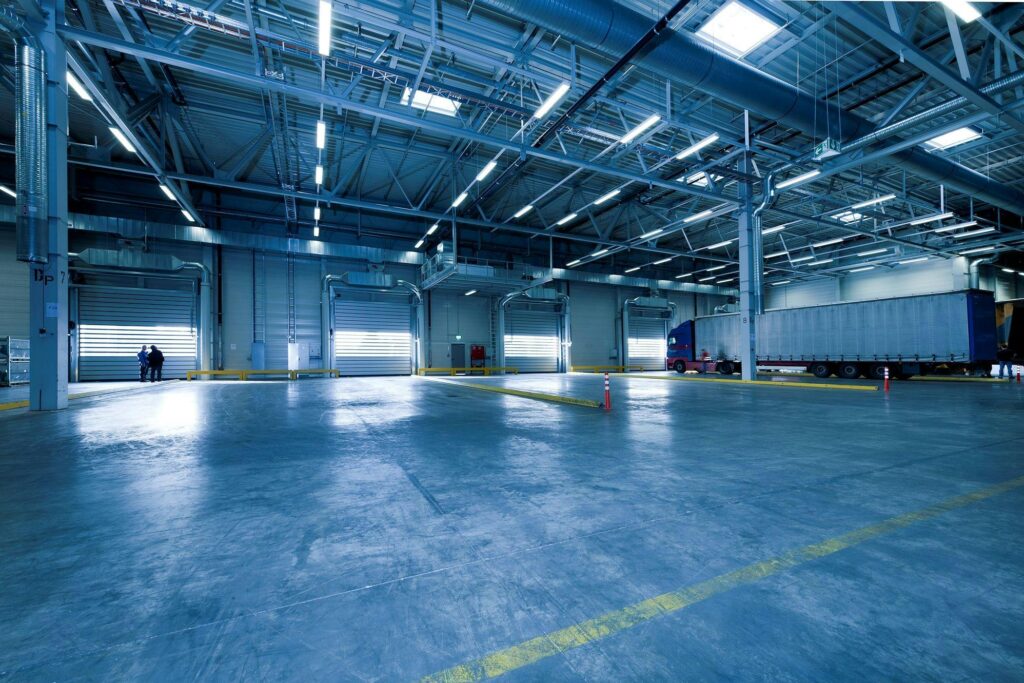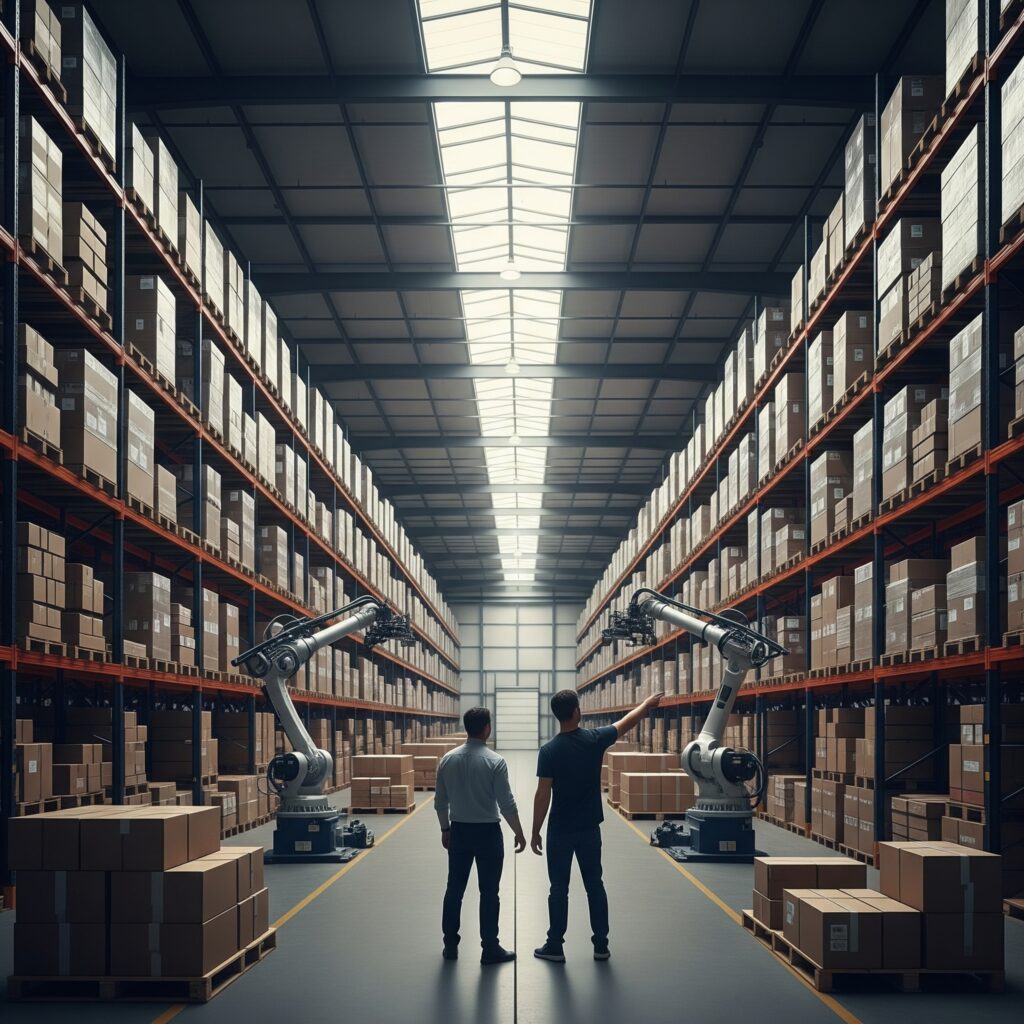
Meet our Expert
Michael Kahane grew up in Israel and studied at Ben Gurion University, where he earned his BSc and MSc in electrical engineering. He started out in the semiconductor industry and became interested in sensors, which led to his fascination with the team building the DeepMind project in London. That evolving interest in AI connected him with Derik Pridmore, with whom he co-founded OSARO in 2015. As CTO of OSARO, he leads the development of algorithms, robot integrations, and both cloud and on-premise infrastructure. He also works closely with customers to help optimize the performance of robotic solutions.
The e-commerce triple dilemma
By Michael Kahane, OSARO CTO
Despite recession fears, the holiday season has come and gone with sales gains, and online orders continued to rise. There’s no question that the explosion in e-commerce, accelerated by the pandemic, continues to overwhelm fulfillment centers. At the same time, warehouse labor remains near impossible to find or retain, and customers expect next-day delivery. This conundrum is not going away – and it poses an existential threat to retail.
Smarter warehouse automation
The triple dilemma of high demand, new consumer expectations, and a persistent labor shortage is driving the need for smarter warehouse automation. Powered by machine learning, smarter robots can now assume tasks that expand the role robots play on the warehouse floor, save costs, and create safer, better jobs for people. While today’s warehouses are already humming with mobile robots, automated storage retrieval systems, and programmed conveyers, a new generation of piece-picking robots can now perform automated bagging, kitting, depalletizing, decanting and induction – tasks previously done only by humans. In the automation industry, this is known as a shift from the goods-to-person (GTP) function to the goods-to-robot (GTR) segment of warehouse technology, and it’s a crucial area where the greatest remaining gains in efficiency can be achieved.
Automation technology will be a crucial turning point between future operational success and failure. A new cadre of smart robots will help retailers create competitive advantage. Those who wait to invest will likely find themselves left behind.
What is smart robotics?
These new robots are not just programmed to shuttle bins up and down walkways, their machine-learning algorithms allow them to continuously adapt to new products and improve on their own. They leverage superior vision and perception software, along with cheaper, sophisticated cameras and sensors that allow a robot to see, perceive, grasp, and place an object.
An intelligent, AI-driven robot can pick items from a jumbled pile of different products. Each object may have a different shape, weight, or dimension. It may be smooth or crinkled, round, square, or wrapped in a polybag. The robot can determine how to pick it up. It can then scan it and, when integrated with other technologies in the warehouse, label it, bag it, sort it, or send it downstream for further processing. Robots can also now depalletize and decant—that is, unpack boxes on giant pallets while avoiding misshapen, damaged boxes or forgotten foreign objects like box cutters and tape dispensers.
Subscription products and kitting
Another reason for retailers to utilize smarter piece-picking robots in their fulfillment operations is the rapidly growing sales and marketing concept of subscription products, which require kitting. That’s the combination of multiple products, or SKUs, into one larger order packaged in a single box with a new SKU and shipped. Retail distribution giants like Amazon streamline processing, lower costs, and fulfill orders more quickly by shipping multiple single product orders together to a customer. Customers appreciate less packaging and faster delivery.
Another approach that needs kitting is when retailers bundle different but related products – through a subscription buying scheme. Its applications are numerous, varied, and growing. The top applications for kitting in fulfillment centers are clothing, beauty, food and beverages, pets, baby products, and health and fitness. McKinsey & Company reports that 15% of online shoppers have signed up for one or more subscriptions to receive products on a repeated basis, usually through monthly packages.
Kitting means more efficient warehouse processing, lower packaging costs, faster delivery, and better customer satisfaction. It can also create value for retailers by expanding the number of products a consumer buys. Examples include Dollar Shave Club (razors), Blue Apron (meal kits), Home Chef (meal kits), Birchbox (beauty), Sephora Play! (beauty), Glossybox (beauty), Grove Collaborative (natural household, personal care), Just Fab (women’s boots), Loot Crate (gaming), Lovevery, (monthly age-appropriate toys for infants and up), and BarkBox, (monthly varied dog toys, treats, and chewy bones), to name a few.
Kitting eliminates the need to separately pick, pack and ship each item, thereby saving time and cost. Typically, warehouse workers have laboriously preassembled kits, so as soon as orders are received, the company can ship immediately. It’s another job that smarter robots can do as they continuously adapt to the variety of different products being presented to them.
Subscription products were just a $2.6 billion market in 2016, according to McKinsey, which projects revenue from subscription products will reach $65 billion by 2027. Fulfillment centers need to be ready to handle the coming avalanche of products that require kitting.
A strategic imperative
Making the business case for the adoption of robotic technologies to optimize your fulfillment process has never been more important. MHI’s 2022 annual report, “Evolution to Revolution,” warned that automation technology will be a crucial turning point between future operational success and failure. The report’s survey of supply chain leaders found that among those anticipating new supply chain investment, 79 percent plan to adopt robotics and automation within 5 years, compared to less than 28 percent today. Indeed, despite some expected short-term dips in growth, revenues from investment in warehouse automation overall are expected to balloon from $28.5 billion in 2020 to $77.2 billion in 2027, according to data research firm Interact Analysis. Those who wait to invest will likely find themselves left behind.
Making the business case for robotics
The good news is that the case for investing in automation has gotten easier. Most automation vendors are moving toward robot-as-a-service (RaaS) contracts, which shift expenses from large, risky capital expenditures to controlled operational costs that can be adjusted as needs change. Access to cheap cloud computing and storage has also changed the cost equation for robotics and has accelerated the advances in artificial intelligence.
The triple dilemma of demand, labor, and sky-high consumer expectation is not going away, but a new cadre of smart robots will help retailers mitigate the threat and create competitive advantage.
This opinion piece first appeared in Retail Today‘s State of Retail Supply Chain & Fulfillment 2023 special issue.





